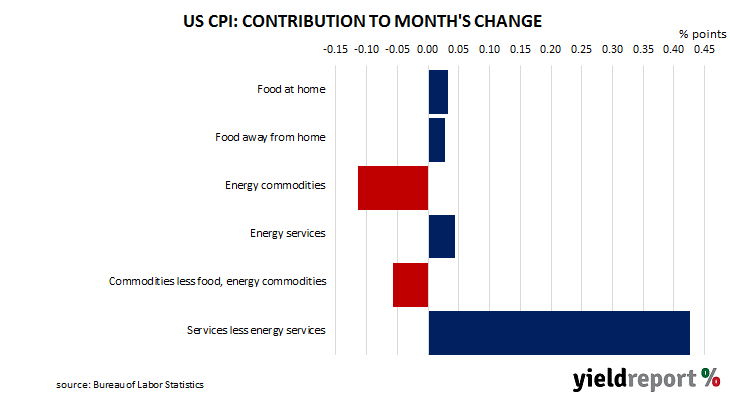Summary: US CPI up 0.3% in January, above expectations; “core” rate up 0.4%; Citi: services inflation proving to be sticky; Treasury yields jump; rate-cut expectations soften; ANZ: shelter inflation proving slow to fall; prices of non-energy services main driver again.
The annual rate of US inflation as measured by changes in the consumer price index (CPI) halved from nearly 3% in the period from July 2018 to February 2019. It then fluctuated in a range from 1.5% to 2.0% through 2019 before rising above 2.0% in the final months of that year. Substantially lower rates were reported from March 2020 to May 2020 and they remained below 2% until March 2021. Rates then rose significantly before declining from mid-2022.
The latest US CPI figures released by the Bureau of Labor Statistics indicated seasonally-adjusted consumer prices rose by 0.3% on average in January. The increase was above the 0.2% rise which had been generally expected as well as December’s 0.2% rise after it was revised down from 0.3%. However, on a 12-month basis, the inflation rate slowed from 3.3% to 3.1%.
“Headline” inflation is known to be volatile and so references are often made to “core” inflation for analytical purposes. The core prices index, the index which excludes the more variable food and energy components, increased by 0.4% on a seasonally-adjusted basis over the month, above consensus expectations of a 0.3% rise. The annual growth rate remained steady at 3.9%.
“Core CPI in January was clearly much stronger than we had expected, but reinforced our view that services inflation would prove sticky,” said Citi economist Veronica Clark. “While many elements that we expected to be weak…did decline, this was more than offset by strength in services prices.”
US Treasury bond yields jumped on the day. By the close of business, the 2-year Treasury yield had gained 18bps to 4.65%, the 10-year yield had increased by 14bps to 4.31% while the 30-year yield finished 10bps higher at 4.47%.
In terms of US Fed policy, expectations of a lower federal funds rate in the next 12 months softened, albeit with several cuts still factored in. At the close of business, contracts implied the effective federal funds rate would average 5.315% in March, slightly below the current spot rate, 5.305% in April and 5.23% in May. February 2025 contracts implied 4.305%, 102bps less than the current rate.
“The 3-month annualised rate of core CPI rose to 4.0% vs 3.3% in December,” observed ANZ economist Kishti Sen. “That was the highest reading since June. The 6-month annualised pace was 3.6% vs 3.2% and the highest pace since September….Shelter inflation is proving slow to fall.”
The largest influence on headline results is often the change in fuel prices. Prices of “Energy commodities”, the segment which contains vehicle fuels, decreased by 3.2% and contributed -1.1 percentage points to the total. However, prices of non-energy services, the segment which includes actual and implied rents, again had the largest effect on the total, adding 0.43 percentage points after increasing by 0.7% on average.



